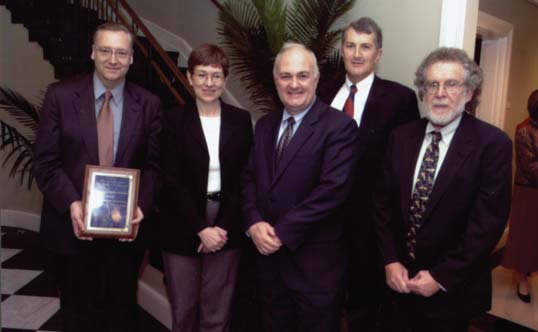
Computing power that used to fill a room can now fit in the palm of a hand. But not all of today’s computational challenges can be met by equipment that can fit in a hand, or even on a desktop. Those involving vast amounts of complex information require leadingedge supercomputers with extraordinary processing capabilities.
Thanks to the IBM Corporation’s recent gifts, the Center for Cardiovascular Bioinformatics and Modeling (CCBM) at the Whitaker Biomedical Engineering Institute now has the powerful computers it needs to create multi-scale computational models. These models, ranging from the genome and proteome to single cells and the whole heart, are expected to lead to important breakthroughs in the understanding of cardiovascular disease and to the prevention, diagnosis, and treatment of heart problems and other human disease.
Whiting School researchers and their colleagues at the Johns Hopkins School of Medicine will be using the powerful information systems being built to understand how genes and proteins interact to influence heart disease, and to target treatment solutions.
In June 2003, IBM recognized the center’s work by naming Johns Hopkins University one of two charter members of IBM’s Life Sciences Institutes of Innovation Program (the other is the University of Indiana)
IBM also awarded the CCBM a Shared University Research (SUR) Award for its ongoing work in mathematical and computational life sciences and informatics. CCBM’s director is Raimond L. Winslow, who in 1998 created a virtual heart that could simulate cardiac arrest—very useful in researching lifesaving drugs. A professor of Biomedical Engineering, Winslow also has joint appointments including those in the Whiting School’s departments of Computer Science and of Electrical and Computer Engineering.
The SUR grant will fund equipment and graduate fellowships in Winslow’s programs at the Whitaker Institute.
IBM’s awards bring to the CCBM massive computing capability and research opportunities. Over the next three years, the company’s support for CCBM will total $1.2 million, primarily in graduate fellowship support, student aid, and equipment. Cumulatively, IBM has contributed more than $4.7 million to the Johns Hopkins University. Provost Steven Knapp described the Institutes of Innovation Award as representing “a collaboration between a world-class organization and a world-class university that share a dedication to harnessing innovation in the interest of meeting real human needs.”
Dr. Carol Kovac, general manager of IBM Life Sciences said, “When we first talked about innovation institutes, we decided that we would build on longstanding collaborations. This institute is founded on a real intellectual and scientific collaboration between JHU and IBM.” She spoke at the ceremony held in November 2003 at the Whiting School’s Clark Hall to present the Institutes of Innovation award.
The SUR award will provide CCBM with technology that can simulate complex and highly detailed models of heart cells, tissues, and organs, and seek variations in gene expression during disease states. Researchers expect to gain insights that could lead to new, more effective drugs for treating heart-related illnesses and to novel approaches for the understanding, cause, diagnosis, and treatment of other human diseases. IBM funds about 50 SUR awards a year, collaborating with institutions worldwide. In the process, it facilitates valuable connections among top researchers in academia and industry.
Murray B. Sachs, Massey Professor and director of the Whitaker Biomedical Engineering Institute, notes that the infusion of resources through the Institutes of Innovation designation will advance programs that “point the way to closer collaborations between the schools of Medicine and Engineering, which will place Hopkins among the leading institutions in computational biology, a crucial component of modern biomedical research.”
Adds Winslow, “The future holds tremendous opportunity. There is a great deal of interest throughout the Whiting School in computational technologies. IBM is going to be a treasured partner in moving forward.”
For more information on the Center for Cardiovascular Bioinformatics and Modeling, visit www.ccbm.jhu.edu . For more on IBM’s efforts in the life sciences, visit www.ibm.com/lifesciences




